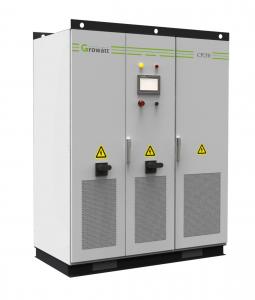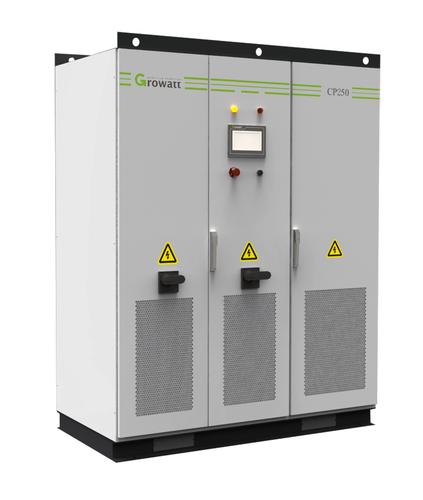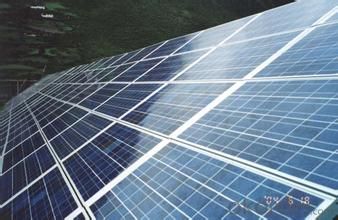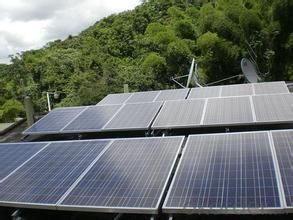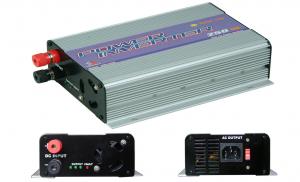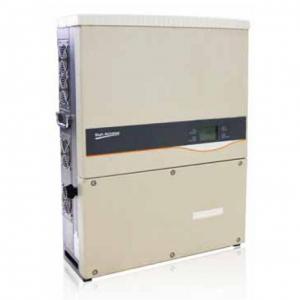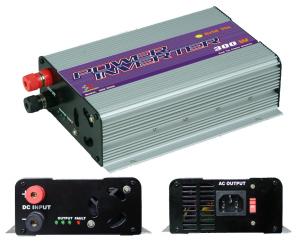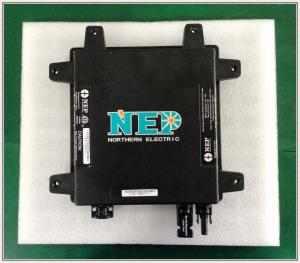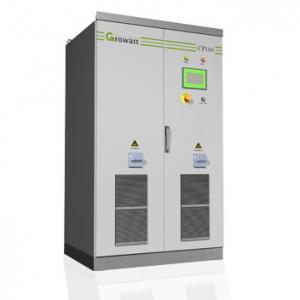Central Grid Connected Solar Inverter CP 250kw
- Loading Port:
- Shekou
- Payment Terms:
- TT or LC
- Min Order Qty:
- 20 pc
- Supply Capability:
- 10000 pc/month
OKorder Service Pledge
OKorder Financial Service
You Might Also Like
Central grid connected Solar inverter CP 250kw
High conversion efficiency of 98.6% deliver more energy
Powerful grid management functions(including LVRT)
Active power continous adjustment adjustment(0-100%)
Reactive power adjustable, PF range 0.9leading-0.9lagging
Friendly touch monitoring interface, easy installation maintenance procedure
Design for max. ROI: newest generation IGBTs and advanced MPPT algorithms
Auxiliary electrical heating(optional)
Comprehensive protection for overvoltage,islanding,short-circuit,overload,overheat etc.
Certificate and approvals including CE,CGC,VDE0126,IEC62109,TUV etc.
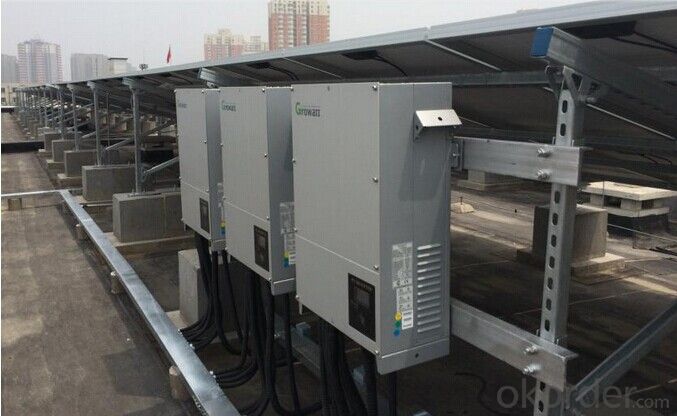
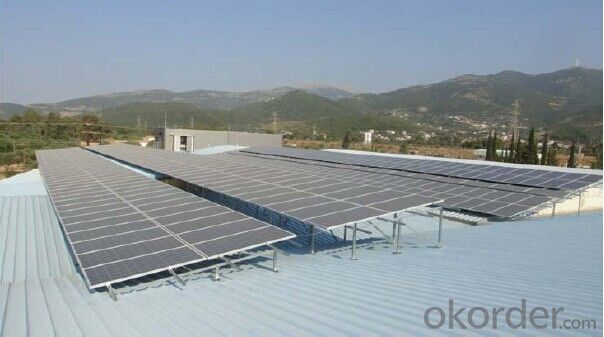
Datasheet
| Efficiency | ||||
Max. efficiency | 97.3% | |||
| Output (AC) | ||||
Rated AC output power | 250kVA | |||
| Protection | ||||
DC disconnection device | DC circuit breaker | |||
| General data | ||||
Dimension (W/H/D) | 1600/2080/850 mm | |||
FAQ
1. Have any design tool and how to use it?
Shine Design is the system design software just for inverters,
It can conduct installers to figure out panel numbers for a system, panel numbers for each string,
and which inverter model is suitable for the system.
Moreover, it can print a design report after input all necessary parameters, can calculate DC/AC wire wastage, annual generation, etc.
2. Does the inverter have monitoring solutions for residential system?
For small rating system, we have wired two monitoring solution (ShineNet via RS232 or RS485).
(a) Local wireless monitoring solution (ShineVision via RF module communication)
(b) Global wireless monitoring solution (WIFI module via WIFI network)
3. Do you have free solution for monitoring?
ShineNet is an inverter monitoring software run in Windows XP, Windows Vista, Windows 7 operating system.
It can monitor inverter via RS232 (or RS232 convert to USB cable) and RS485 wire connection.
Customers can purchase the cable locally to get the inverter monitored, it is simple.
- Q: Can a solar inverter be used with solar-powered greenhouse systems?
- Yes, a solar inverter can be used with solar-powered greenhouse systems. A solar inverter is an essential component that converts the direct current (DC) generated by solar panels into alternating current (AC), which is required to power electrical devices in the greenhouse. By connecting the solar panels to the solar inverter, the greenhouse systems can effectively utilize the solar energy for various applications such as lighting, heating, and ventilation.
- Q: Can a solar inverter be used in harsh weather conditions?
- Yes, solar inverters are designed to withstand harsh weather conditions such as extreme temperatures, humidity, and even rain. They are typically built with protective enclosures and advanced technology to ensure reliable operation and optimal performance in challenging environmental conditions.
- Q: What is the difference between low voltage grid connection and medium voltage grid connection?
- The difference is that the current at low voltage and the grid is large, the current is small when the voltage is small, followed by the low voltage crossing parameter setting problem (such as PV inverter integrated with inverter and low voltage crossing function, not all photovoltaic inverter
- Q: Are there any fire safety concerns associated with solar inverters?
- Yes, there are some fire safety concerns associated with solar inverters. While solar inverters are generally safe and undergo rigorous testing to meet safety standards, there have been rare instances of fires caused by faulty inverters or improper installation. It is crucial to ensure that inverters are installed by qualified professionals following manufacturer guidelines and regularly inspected for any signs of damage or malfunction. Additionally, proper maintenance and monitoring of the inverter system can help mitigate any potential fire risks.
- Q: Can a solar inverter be monitored remotely?
- Yes, a solar inverter can be monitored remotely. Many modern solar inverters have built-in monitoring capabilities that allow users to track the performance and energy production of their solar system from a remote location. This can be done through software applications or web-based platforms that provide real-time data and analytics, enabling users to monitor the system's efficiency, diagnose issues, and optimize its performance without physically being present at the location of the inverter.
- Q: How does a solar inverter protect against overvoltage?
- A solar inverter protects against overvoltage by monitoring the voltage levels of the solar panels. When the voltage exceeds the safe operating range, the inverter automatically reduces the power output or completely shuts down to prevent any damage to the electrical system. Additionally, some inverters are equipped with surge protection devices to further safeguard against sudden voltage spikes.
- Q: How does a solar inverter handle reactive power compensation?
- A solar inverter handles reactive power compensation by using advanced control algorithms and capacitors. It actively measures the reactive power in the system and generates the necessary reactive power to balance it out. This helps stabilize the voltage and ensures efficient energy transfer between the solar panels and the grid.
- Q: Can a solar inverter be used in a remote location without access to the grid?
- No, a solar inverter cannot be used in a remote location without access to the grid. Solar inverters convert DC power generated by solar panels into AC power, which is suitable for use in homes and businesses connected to the electrical grid. Without access to the grid, there is no way to utilize the output of a solar inverter.
- Q: How does a solar inverter communicate with other system components?
- A solar inverter communicates with other system components through various methods such as wired connections or wireless technologies like Wi-Fi or Bluetooth. It exchanges information with components like solar panels, batteries, and control systems to monitor and regulate the flow of electricity, optimize energy production, and ensure safe and efficient operation of the solar power system.
- Q: Can a solar inverter be used with different types of solar PV systems (roof-mounted, ground-mounted, etc.)?
- Yes, a solar inverter can be used with different types of solar PV systems, including roof-mounted and ground-mounted systems. Solar inverters are designed to convert the DC (direct current) electricity generated by solar panels into AC (alternating current) electricity that can be used in homes or fed back into the grid. Regardless of the installation type, the solar inverter's function remains the same.
Send your message to us
Central Grid Connected Solar Inverter CP 250kw
- Loading Port:
- Shekou
- Payment Terms:
- TT or LC
- Min Order Qty:
- 20 pc
- Supply Capability:
- 10000 pc/month
OKorder Service Pledge
OKorder Financial Service
Similar products
Hot products
Hot Searches
Related keywords
